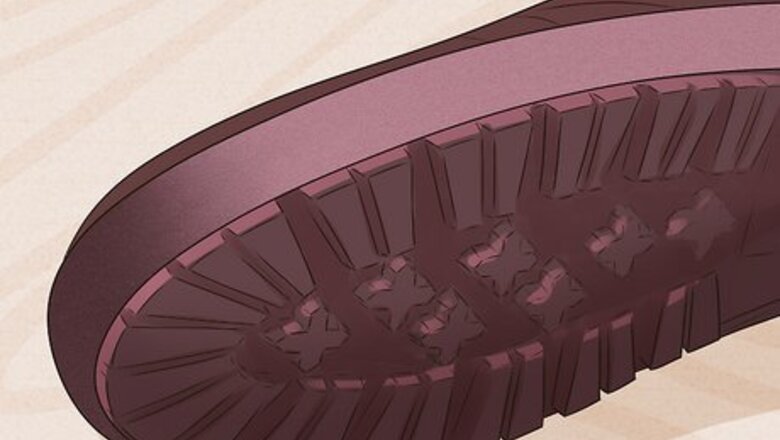
views
- Check the shoes for a deep pattern of treads that are shaped like hexagons, squares, triangles, or circles.
- Confirm that the outsoles are made from rubber, polyurethane, or PVC and have angled sides that prevent liquid from getting trapped.
- Look for the words “anti-slip,” “non-slip,” or “slip-resistant” printed on the soles or on the label that came with your shoes.
Checking if Shoes are Non-Slip
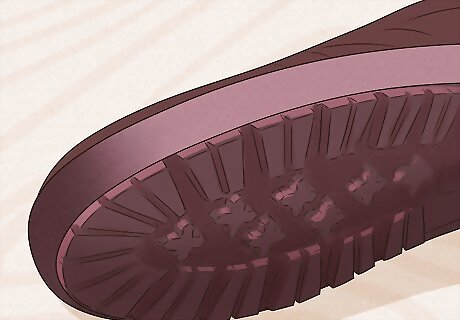
Look for a deep tread pattern on the bottoms of the shoes. Non-slip shoes tend to have treads shaped like hexagons, triangles, squares or circles to give you more traction on slick surfaces. The treads on non-slip shoes are individually separated by small channels instead of interlocking with each other so liquid can run between them. You may also notice deep lines separating the treads into 3 or 4 sections. Treads on-slip shoes tend to be about 3 millimetres (0.12 in) deep and around at least 2 millimetres (0.079 in) apart. Liquids move between the treads on non-slip shoes, which helps your soles get a better grip on the floor. Circular treads and smaller tread patterns are the most slip-resistant because they have more surface area pressing against the floor than other shapes.
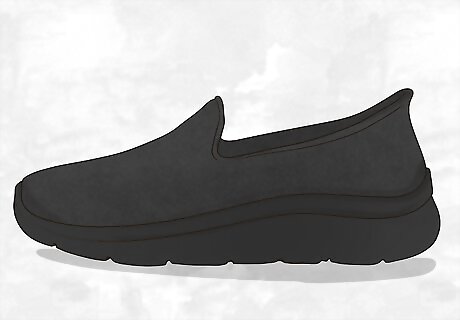
Check for angled outsoles made from rubber, polyurethane, or PVC. Non-slip shoes tend to have angled or rounded heels and toes on the outsoles to help liquid run off. While most non-slip soles are made from rubber for the best slip resistance, polyurethane or PVC are also acceptable materials. Check the tags inside the shoes to see if they list the soles’ material to determine if they’re slip-resistant. Soles with flat heels and toes can trap liquid underneath your shoes, which makes it more likely for you to slip. Having rounded or angled outsoles lets liquid run off your shoes so they’re less slippery. Non-slip shoes also usually have thicker outsoles for more cushion and comfort, so it may help compare their thickness to another pair of shoes you own.
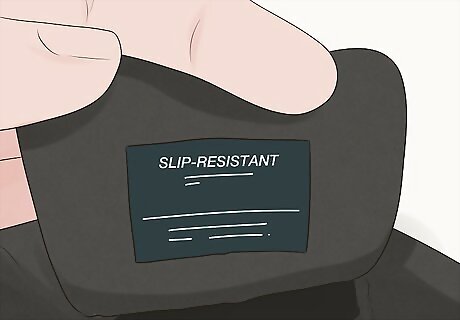
Search for a “non-slip” or “slip-resistant” label. Look at the sides and bottoms of the outsoles for the words “non-slip,” “anti-slip,” or “slip-resistant” stamped directly into the material. If you don’t see the words printed there, check the shoe box your shoes came in to see if the packaging was labeled non-slip. “Non-slip” and “slip-resistant” shoes are interchangeable terms that mean the same thing. If you don’t have the shoe box anymore but know the brand and name of the shoes you have, try searching for them on the manufacturer site to see if they’re listed as non-slip.
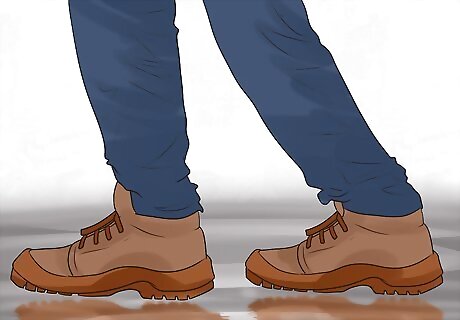
Put the shoes on and try sliding on a smooth surface. Walk around in the shoes and pay attention to how the grip and traction feels. If you’re able to, stand on smooth flooring like tile or laminate and try sliding the shoes from side to side. If the shoes have a firm grip and don’t move easily, then it’s likely that they’re non-slip. If they easily slip to one side, then they do not have enough traction. If you’re trying to tell if shoes are slip-resistant at home, put a little water on a tile floor and stand in the puddle. Put weight on your foot and try sliding it in the water to see if it slips. Non-slip shoes will stay in place but other shoes will move around easily.
How do non-slip shoes work?
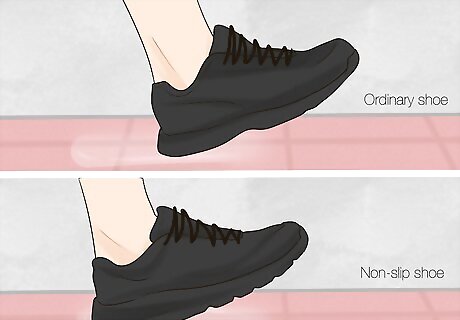
The treads press against the ground and create friction to prevent slipping. When you step on a smooth slippery surface while wearing non-slip shoes, the multiple treads grip onto the floor so you have a better footing without sliding around. If there’s any liquid on the floor, it will move between the shoes’ deep treads and disperse evenly so your soles stay in contact with the floor.
Non-Slip Shoes FAQs
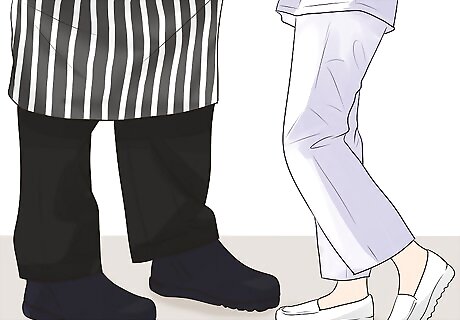
Who should wear non-slip shoes? Non-slip shoes are required by employers for many jobs where floors could get wet, slippery, or greasy to prevent workplace accidents. If you’re starting a new position, double-check if you need shoes that are non-slip or slip-resistant. Some normal positions where it’s necessary to wear non-slip shoes include: Food service workers Healthcare workers Warehouse or factory employees Delivery drivers or postal workers Cleaning service workers Hair stylists and barbers
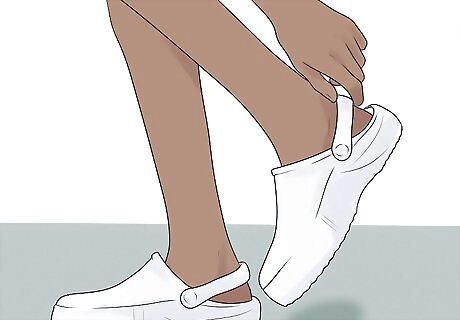
What else should I look for when choosing non-slip shoes? If you’re buying new non-slip shoes, make sure that they’re comfortable and fit your foot well. Walk around in them to see if they’re comfortable on different surfaces. Pay attention to how the shoes feel around your ankle and under your heel as you wear them. Choose shoes from a reputable brand that uses durable materials so your shoes last. Non-slip shoes come in a variety of styles, so choose an aesthetic that you like best. Just make sure it fits into your employer’s dress code if you’re getting them for work.
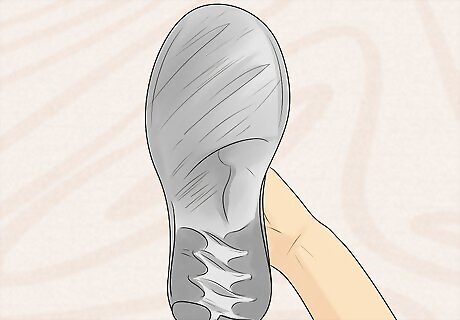
When should I replace my non-slip shoes? Get new non-slip shoes when the treads have worn down and look smooth. A sure sign that it’s time to replace your shoes is that they start feeling slippery. Check the tread on your shoes one or twice a month by placing the base of a AA battery by the edge of your heel. If the area of worn tread is larger than the base of the battery, it’s time to get new shoes. As your shoes get more worn down, check them weekly instead so you don’t risk slipping and falling.
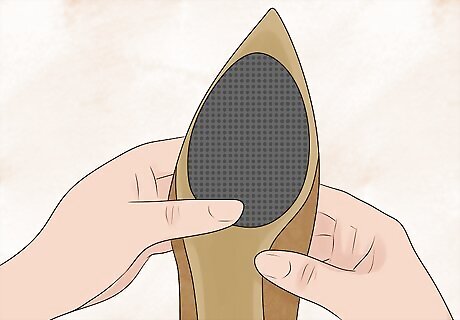
Can you make regular shoes non-slip? If you’re trying to make shoes less slippery, then attach non-slip stickers to the bottoms of the soles to add some extra traction. You may also be able to apply grip spray onto your shoes so they dry with more traction. Alternatively, take your shoes to a repair shop and ask them to add rubber grips to the bottom.


















Comments
0 comment